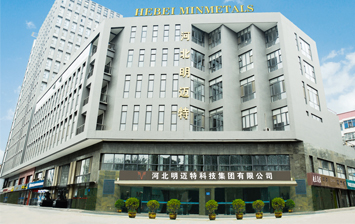Tips for Building an Effective Tomato Trellis in Your Garden
Aug . 16, 2024 09:49
The Art of Tomato Trellising A Guide for Gardeners
Growing tomatoes is a rewarding endeavor for gardeners of all levels. While the satisfaction of harvesting juicy, homegrown tomatoes is a highlight, the journey to that harvest often begins with proper support—hence the importance of trellising. Tomato trellis systems are not just functional; they can also enhance your gardening experience and improve the yield and quality of your tomatoes. This article will explore the different types of trellising methods, their benefits, and some tips for success.
Why Trellis Your Tomatoes?
Trellising is the practice of supporting plants with structures that allow them to grow upright. For tomatoes, this method provides numerous advantages
1. Space Efficiency By growing tomatoes vertically, you optimize your garden space, especially in smaller plots. This method allows you to grow more plants in a limited area, increasing your harvest potential.
2. Improved Air Circulation Trellised tomatoes have better airflow around the plants, reducing the risk of diseases such as blight, which thrive in humid, densely packed environments.
3. Easier Maintenance With tomatoes off the ground, it’s easier to manage watering, pruning, and harvesting. You can access the fruit without needing to crouch or bend down, making the gardening experience more enjoyable.
4. Enhanced Sun Exposure Vertically growing plants can absorb more sunlight, which is crucial for the production of flavorful, ripe tomatoes. Optimal sun exposure can result in healthier plants and tastier fruits.
Types of Tomato Trellises
There are several methods for trellising tomatoes, and the best choice often depends on the variety of tomato and your personal gardening style
tomato trellis

1. Stakes A simple and popular method involves driving wooden or metal stakes into the ground near the base of each plant. As the tomato plant grows, tie its stem to the stake using soft ties or twine. This method works well for determinate (bushy) varieties that don’t grow excessively tall.
2. Cages Tomato cages, usually made of wire, support plants from all sides. These cages allow for ample room for growth and help keep fruit off the ground. Cages are particularly beneficial for indeterminate (vining) tomato varieties, which require more support as they continue to grow throughout the season.
3. Trellis Systems For a more advanced approach, consider creating a trellis system using a series of horizontal wires or strings attached to a sturdy framework. This method is suitable for indeterminate types and can accommodate multiple plants along a single structure.
4. Florida Weave This is a unique method where two rows of stakes are placed at the ends of the planting row. Twine is woven back and forth between these stakes as the plants grow, providing support while ensuring access for maintenance tasks.
Tips for Successful Tomato Trellising
- Plan Ahead Ensure you set up your trellis before planting your tomatoes. This will prevent any damage to the plants afterward.
- Choose the Right Variety Match your trellising method to the type of tomato you’re growing. Determinate types generally require less support, while indeterminate varieties benefit from more robust systems.
- Regular Maintenance As plants grow, keep an eye on their progress. Regularly tie new growth to the trellis to ensure they don’t overrun their support.
- Strategic Pruning Pruning unnecessary leaves and shoots can help direct energy into fruit production, resulting in better yields.
In conclusion, a well-constructed tomato trellis can significantly enhance your gardening experience. By providing support to your plants, you will not only make maintenance easier but also promote healthier growth. Whether you opt for stakes, cages, or a more elaborate trellis system, the reward of a bountiful tomato harvest will make the effort worthwhile. Happy gardening!




















